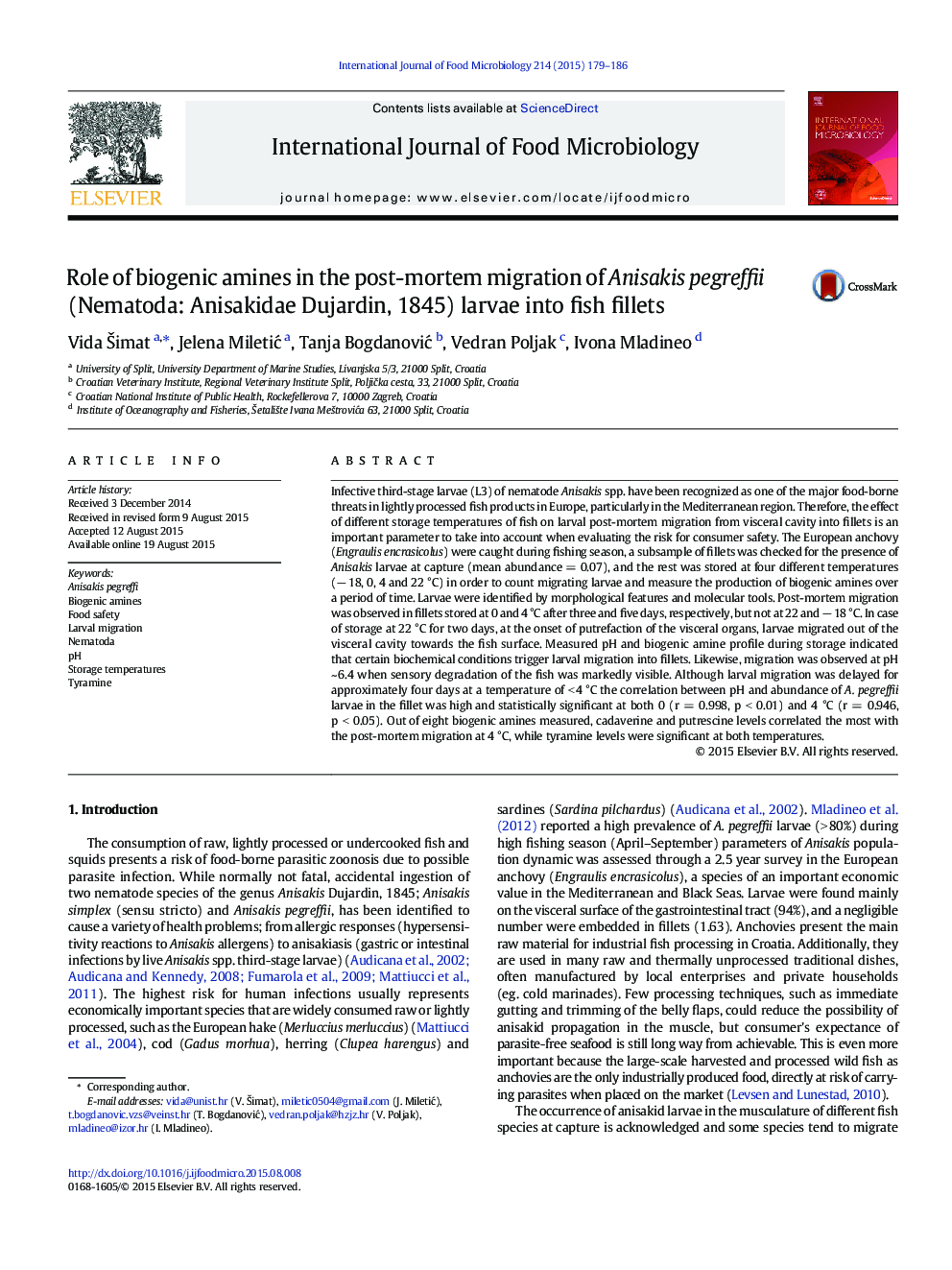| Article ID | Journal | Published Year | Pages | File Type |
|---|---|---|---|---|
| 4366473 | International Journal of Food Microbiology | 2015 | 8 Pages |
•We confirmed post-mortal migration of anisakid larvae into the muscle of European anchovy.•Molecular identification confirmed Anisakis pegreffii.•The role of biogenic amines and pH in post-mortem migration was confirmed.•Storage at a temperature of < 4 °C delays larval migration for 3–5 days.
Infective third-stage larvae (L3) of nematode Anisakis spp. have been recognized as one of the major food-borne threats in lightly processed fish products in Europe, particularly in the Mediterranean region. Therefore, the effect of different storage temperatures of fish on larval post-mortem migration from visceral cavity into fillets is an important parameter to take into account when evaluating the risk for consumer safety. The European anchovy (Engraulis encrasicolus) were caught during fishing season, a subsample of fillets was checked for the presence of Anisakis larvae at capture (mean abundance = 0.07), and the rest was stored at four different temperatures (− 18, 0, 4 and 22 °C) in order to count migrating larvae and measure the production of biogenic amines over a period of time. Larvae were identified by morphological features and molecular tools. Post-mortem migration was observed in fillets stored at 0 and 4 °C after three and five days, respectively, but not at 22 and − 18 °C. In case of storage at 22 °C for two days, at the onset of putrefaction of the visceral organs, larvae migrated out of the visceral cavity towards the fish surface. Measured pH and biogenic amine profile during storage indicated that certain biochemical conditions trigger larval migration into fillets. Likewise, migration was observed at pH ~ 6.4 when sensory degradation of the fish was markedly visible. Although larval migration was delayed for approximately four days at a temperature of < 4 °C the correlation between pH and abundance of A. pegreffii larvae in the fillet was high and statistically significant at both 0 (r = 0.998, p < 0.01) and 4 °C (r = 0.946, p < 0.05). Out of eight biogenic amines measured, cadaverine and putrescine levels correlated the most with the post-mortem migration at 4 °C, while tyramine levels were significant at both temperatures.
